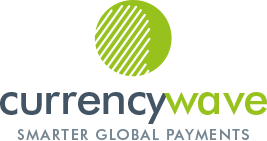The process of sending currency payments from one country to another is sometimes regarded as a complex and archaic process. In fact, the global framework for dealing with international payments was established back in the 1970s and has changed little since, despite significant advances in technology. SWIFT payments (otherwise known as wire transfers or telegraphic transfers) became the recognised global standard for cross border remittances and is still in use today.
SWIFT (an acronym for the Society for Worldwide Interbank Financial Telecommunications) is a global co-operative founded in 1973, which established a standardised message format for financial institutions to communicate transactions between each other. Today the SWIFT network connects over 11,000 financial organisations around the world, including banks and securities firms, and handles on average over 28 million messages daily.
A global standard
The SWIFT network does not itself send, receive or hold money on behalf of customers. Instead, its role is to is administer a trusted communications platform that allows its community of members to send standardised and secure messages to each other. This enables the flow of money to take place, with the participants safe in the knowledge that the details supplied will always be recorded in a consistent way and with all the required information. This is important not least because of potential language differences between the parties involved and the need for a transparent and universally adopted audit trail.
Correspondent banks
Smaller banking or other financial institutions may not be direct members of SWIFT but can still benefit from its infrastructure through their relationships with other larger members of the network. So, if you need to send an international payment to a small regional bank in the USA for instance, then it is likely they will need to engage a ‘correspondent bank’ who are SWIFT members to act as an intermediary in routing the payment to its final destination. Usually the correspondent bank will make a small charge for providing this service which is deducted from the payment amount.
MT103 message format
An MT103 is the standard message format used to confirm all the necessary details required to enable an international money transfer via SWIFT. The details contained within the MT103 will include, amongst other things:
- identifier codes for the sending institution, receiving institution and any correspondents,
- sending customer and beneficiary customer information,
- currency,
- amount,
- value date
- transaction reference number.
Customers can request a copy of the MT103 message confirmation in order to obtain proof of payment to a supplier for instance or if they simply need to track the progress of the funds.
Is Blockchain a contender?
Recent developments in Blockchain, or distributed ledger technology, is beginning to challenge the long-established SWIFT system by creating direct messaging services that can avoid the often cumbersome correspondent bank involvement. However, SWIFT have responded with an upgraded service called Global Payments Innovation which can complete instructions within minutes rather than hours. Until the scalability of Blockchain is proven and its adoption by major banking corporations takes hold, it would appear that SWIFT will continue to remain the international payment method of choice for the vast majority of banking organisations.
More Insights
